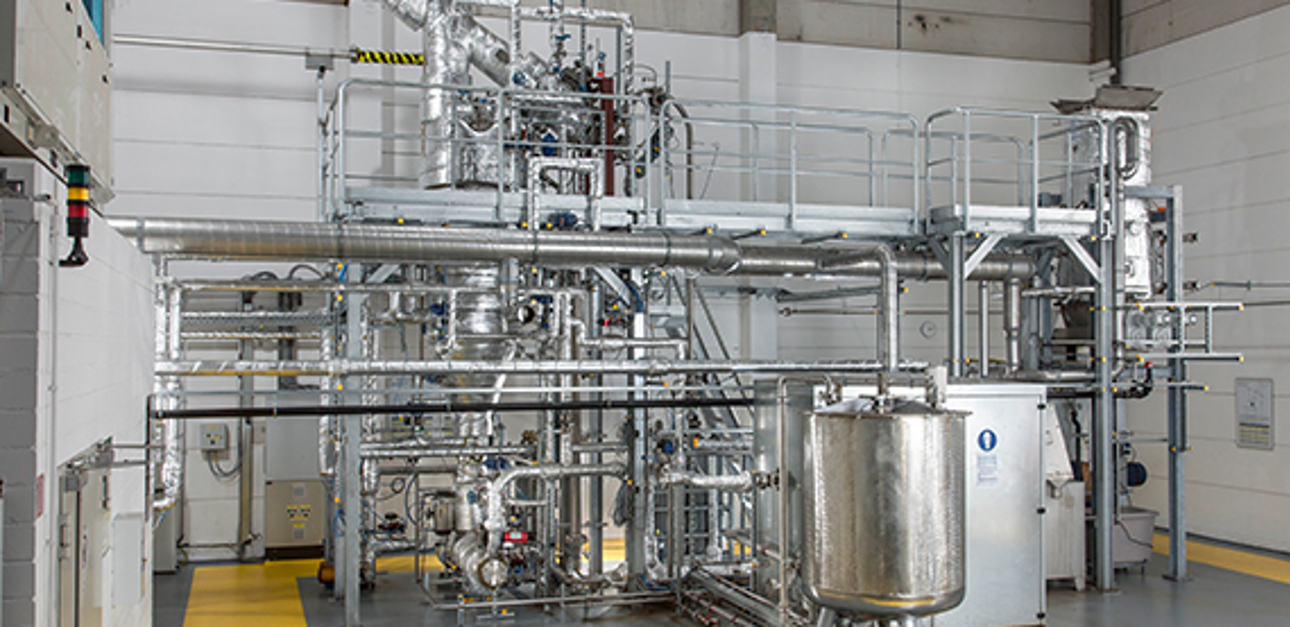A new solution to a classic problem
Feb 17, 2016
A growing number of mills in the pulp and paper industry are experiencing sludge management problems. Sludge generated by the mills binds water, which makes it expensive to transport and dispose of. In addition, there have not been any energy-efficient methods of incinerating sludge. Hydrothermal carbonization (HTC) is a solution to this problem. Sludge management costs are reduced while also cutting CO2 emissions.

Text: Kristofer Sjöblom
HTC is a thermochemical process first described in 1913 by Nobel laureate Friedrich Bergius. Valmet is now offering industrial-scale HTC plants for sludge treatment for the pulp and paper industry based on a continuous HTC process developed by the German company SunCoal. SunCoal is a Valmet technology partner and has developed several applications based on HTC.
Sludge reduced by 70%
In the HTC process, organic sludge is treated at a temperature of 200 °C and a pressure of 20 bar. The structure of the sludge is transformed: chemically bound oxygen and hydrogen as well as intracellular water are removed. Total sludge mass at the start of the HTC process can be reduced by up to 70%, using only 25% of the energy of thermal drying. The end result is a sludge press cake that contributes positive thermal energy when incinerated.
“HTC also cleans the sludge to some extent, and there is potential for removing non-process elements,” says Peter Björklund, Process Engineer at Valmet.
Valmet builds and commissions the plant
The first stage involves analyzing a sample of the customer's sludge. The sludge is treated with HTC and then analyzed again. Valmet then establishes the design criteria and dimensions the plant. Then Valmet builds and commissions the plant. "We can provide an extensive list of guarantees that ensures the reliability of the HTC process," says Peter Björklund.
Great potential
Valmet has high hopes for HTC. Sales Manager Cecilia Geijer believes that the market for HTC will grow rapidly:
"The option of sending sludge to landfill will be limited in the future. Society and industry must find solutions for reducing sludge volumes. HTC is a solution that is both environmentally and financially viable. It has great potential."
Cecilia Geijer and Peter Björklund argue that there is a need for this new technology all over the world and that it is important to raise awareness of what Valmet can offer.
"HTC is an interesting option for companies in the pulp and paper industry that want to reduce the costs of sludge management and meet very strict environmental requirements. We offer a solution to a problem that is growing ever larger, as well as the best possible combination of companies: SunCoal's cutting-edge competence in HTC development combined with Valmet's extensive experience of process plants and equipment for the pulp and paper industry. We have high hopes and expectations now that we are providing HTC on an industrial scale," says Cecilia Geijer from Valmet.